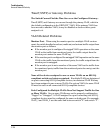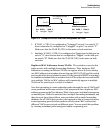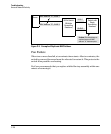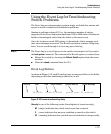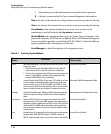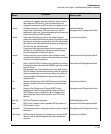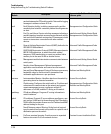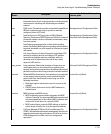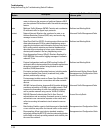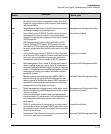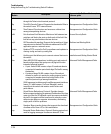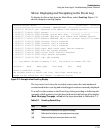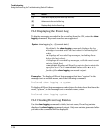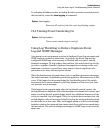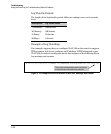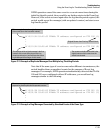
Troubleshooting
Using the Event Log for Troubleshooting Switch Problems
mld Multicast Listener Discovery (MLD): IPv6 protocol used by a
router to discover the presence of multicast listeners. MLD
can also optimize IPv6 multicast traffic flow with the snooping
feature.
Multicast and Routing Guide
mtm Multicast Traffic Manager (MTM): Controls and coordinates
L3 multicast traffic for upper layer protocols.
Multicast and Routing Guide
netinet Network Internet: Monitors the creation of a route or an
Address Resolution Protocol (ARP) entry and sends a log
message in case of failure.
Advanced Traffic Management Guide
ospf Open Short Path First (OSPF): A routing protocol that uses link-
state advertisements (LSA) to update neighboring routers
regarding its interfaces and information on those interfaces.
Each routing switch maintains an identical database that
describes its area topology to help a router determine the
shortest path between it and any neighboring router.
Multicast and Routing Guide
pagp Ports Aggregation Protocol (PAgP): Obsolete. Replaced by
LACP (802.3ad). Not used for logging messages in software
release K.13.
xx.
—
pim Protocol-independent multicast (PIM) routing: Enables IP
multicast traffic to be transmitted for multimedia applications
throughout a network without being blocked at routed
interface (VLAN) boundaries.
Multicast and Routing Guide
ports Port status and port configuration features, including mode
(speed and duplex), flow control, broadcast limit, jumbo
packets, and security settings.
Port messages include events on Power Over Ethernet (POE)
operation and transceiver connections with other network
devices.
Installation and Getting Started Guide
Management and Configuration Guide
Access Security Guide
QinQ IEEE 802.1ad specification, known as QinQ (provider bridging),
provides a second tier of VLANs in a bridged network. QinQ
supports the forwarding of traffic from multiple customers
over a provider network using service VLANs (S-VLANs).
Advanced Traffic Management Guide
radius RADIUS (Remote Authentication Dial-In User Service)
authentication and accounting: A network server is used to
authenticate user-connection requests on the switch and
collect accounting information to track network resource
usage.
Access Security Guide
ratelim Rate-limiting: Enables a port to limit the amount of bandwidth
a user or device may utilize for inbound traffic on the switch.
Management and Configuration Guide
sflow Flow sampling: sFlow is an industry standard sampling
technology, defined by RFC 3176, used to continuously monitor
traffic flows on all ports providing network-wide visibility into
the use of the network.
Management and Configuration Guide
System
Module
Description
Documented in ProCurve Hardware/
Software guide
C-32



